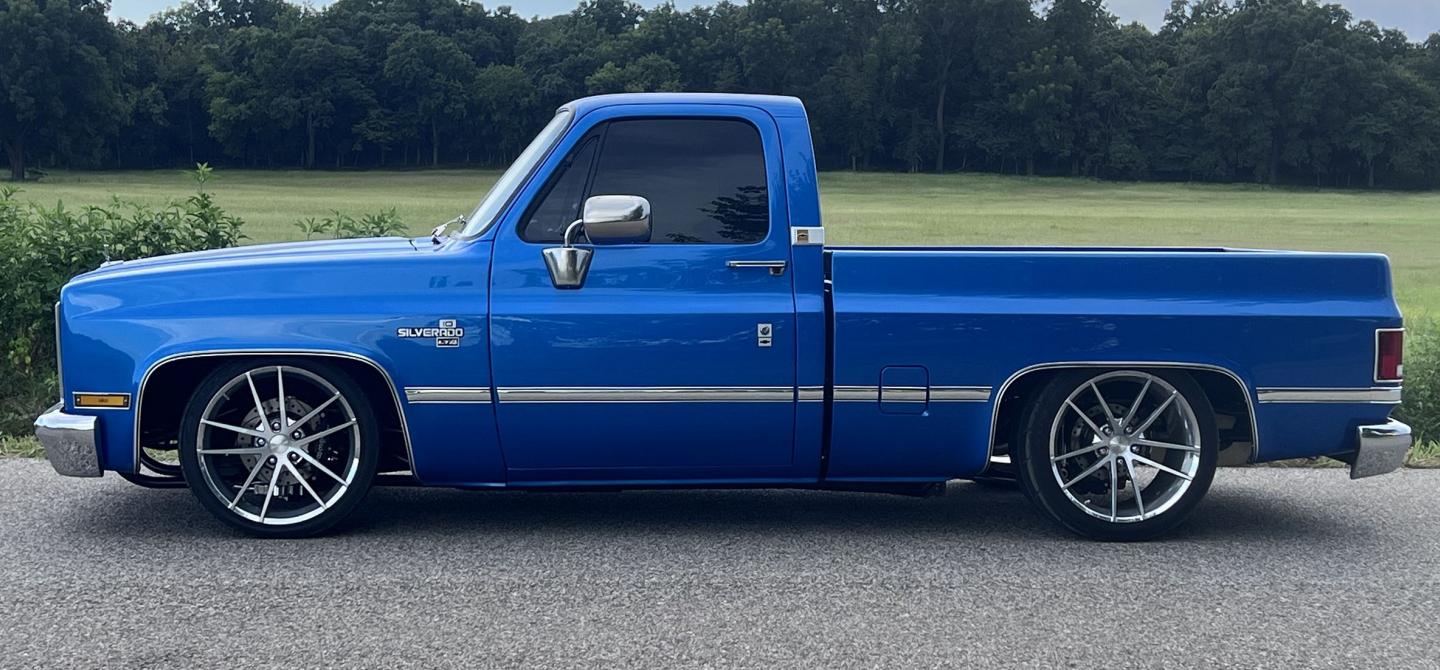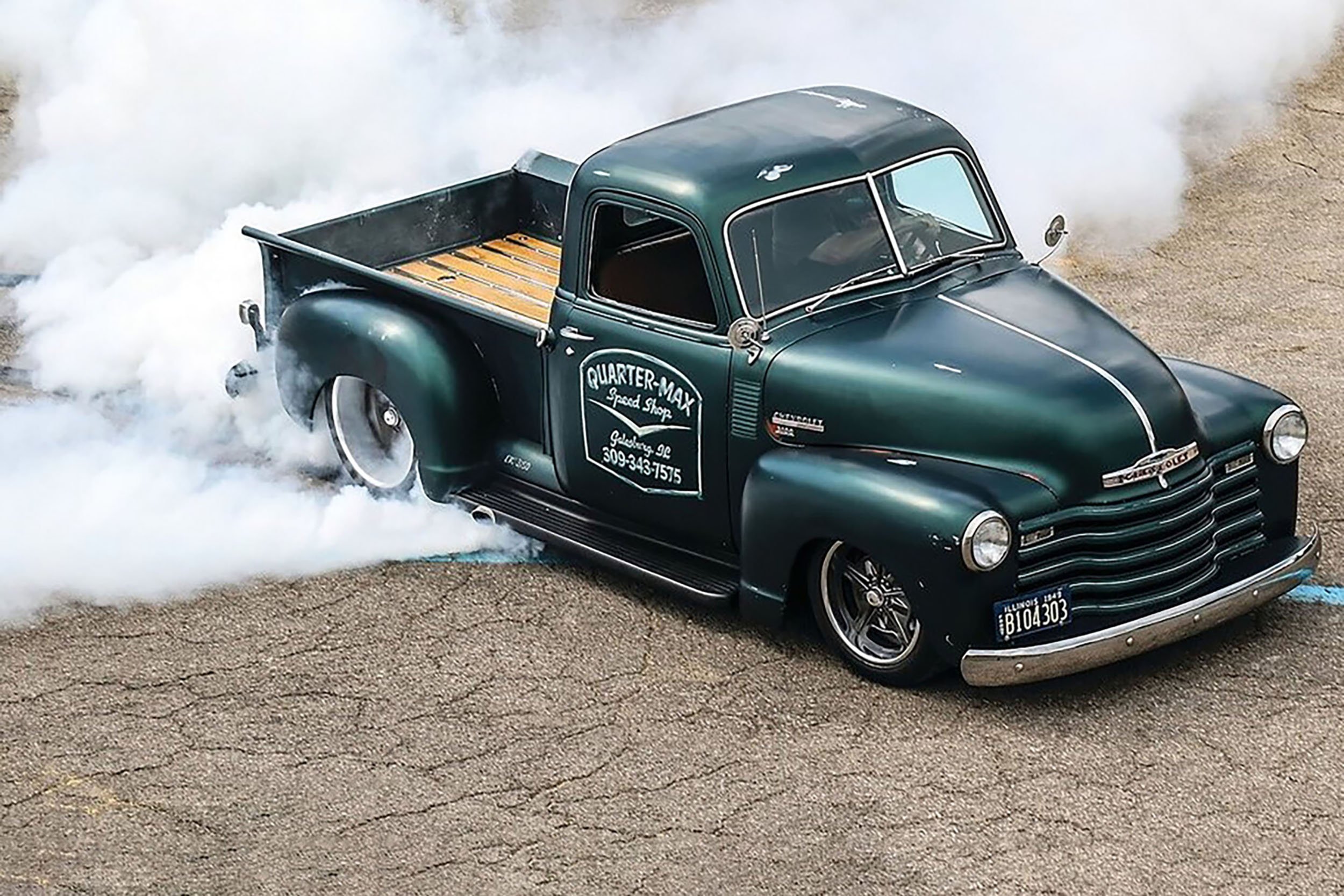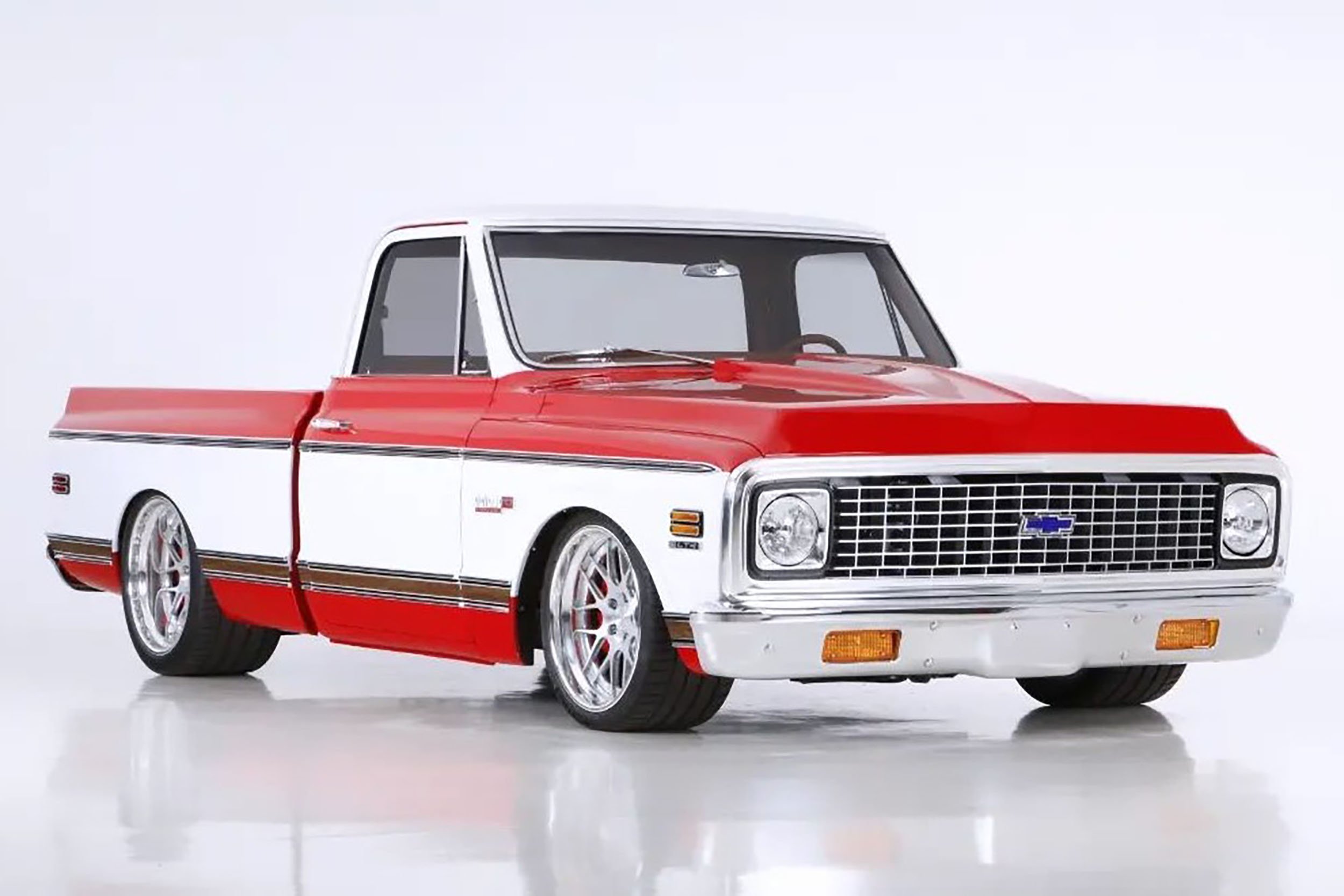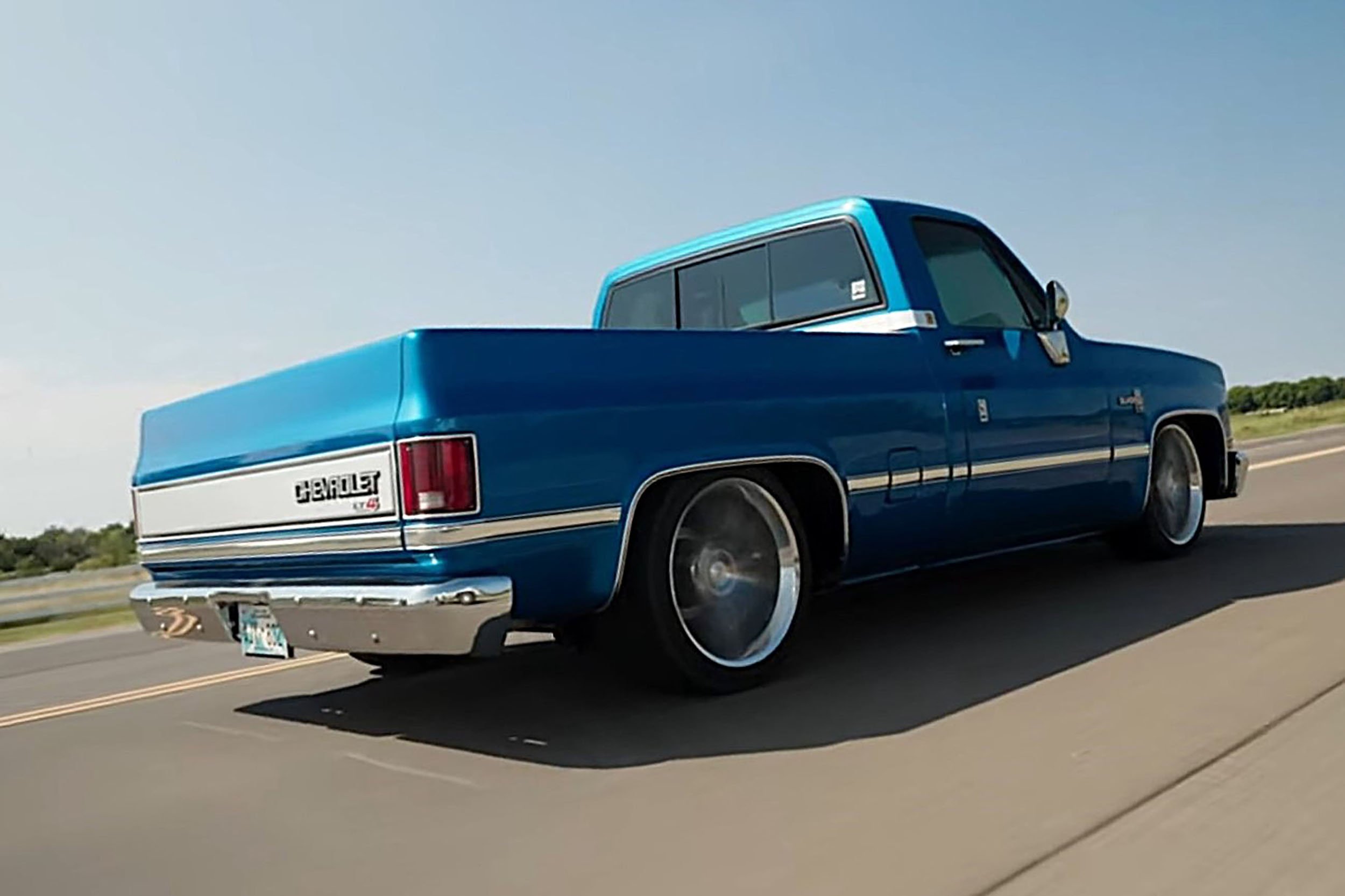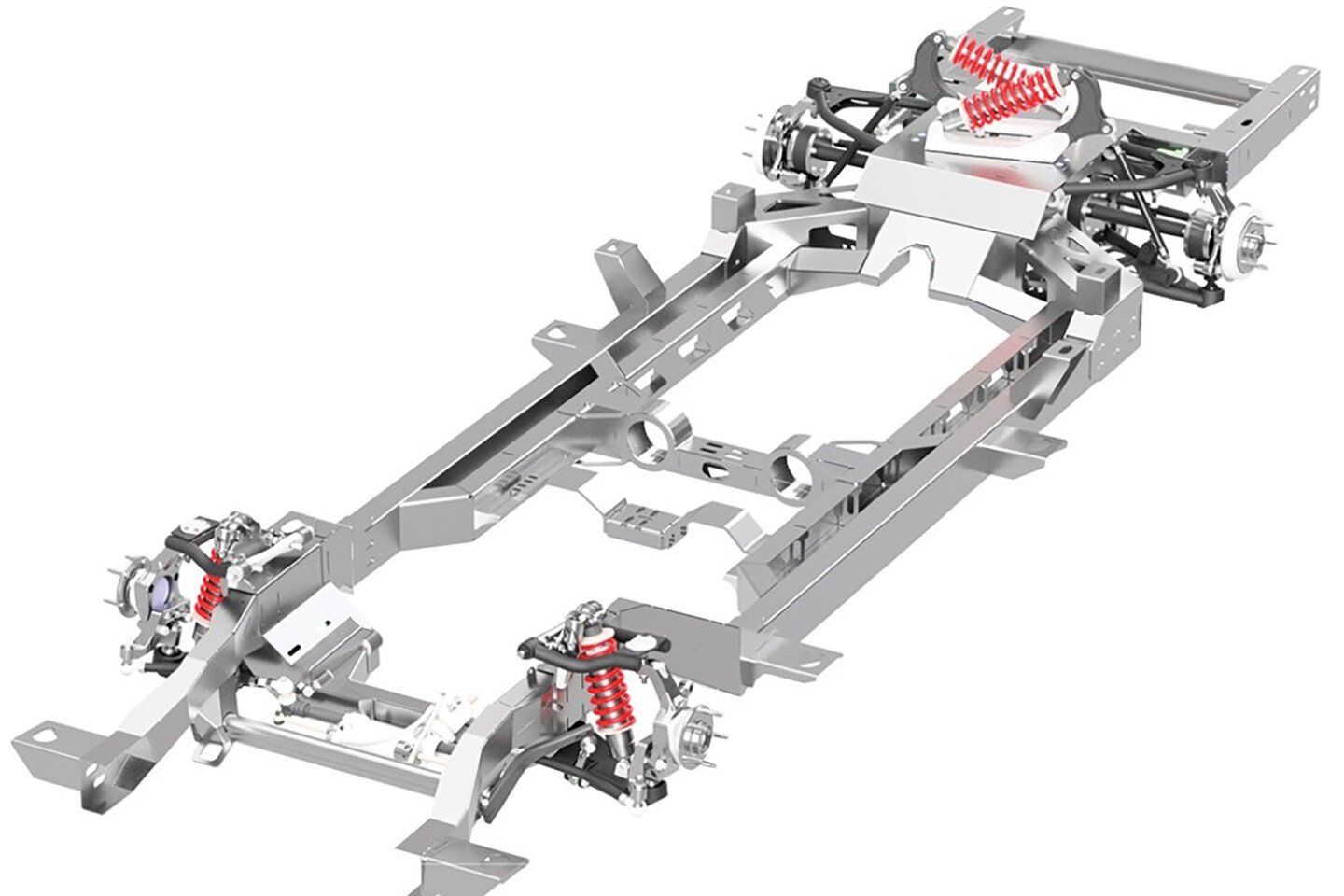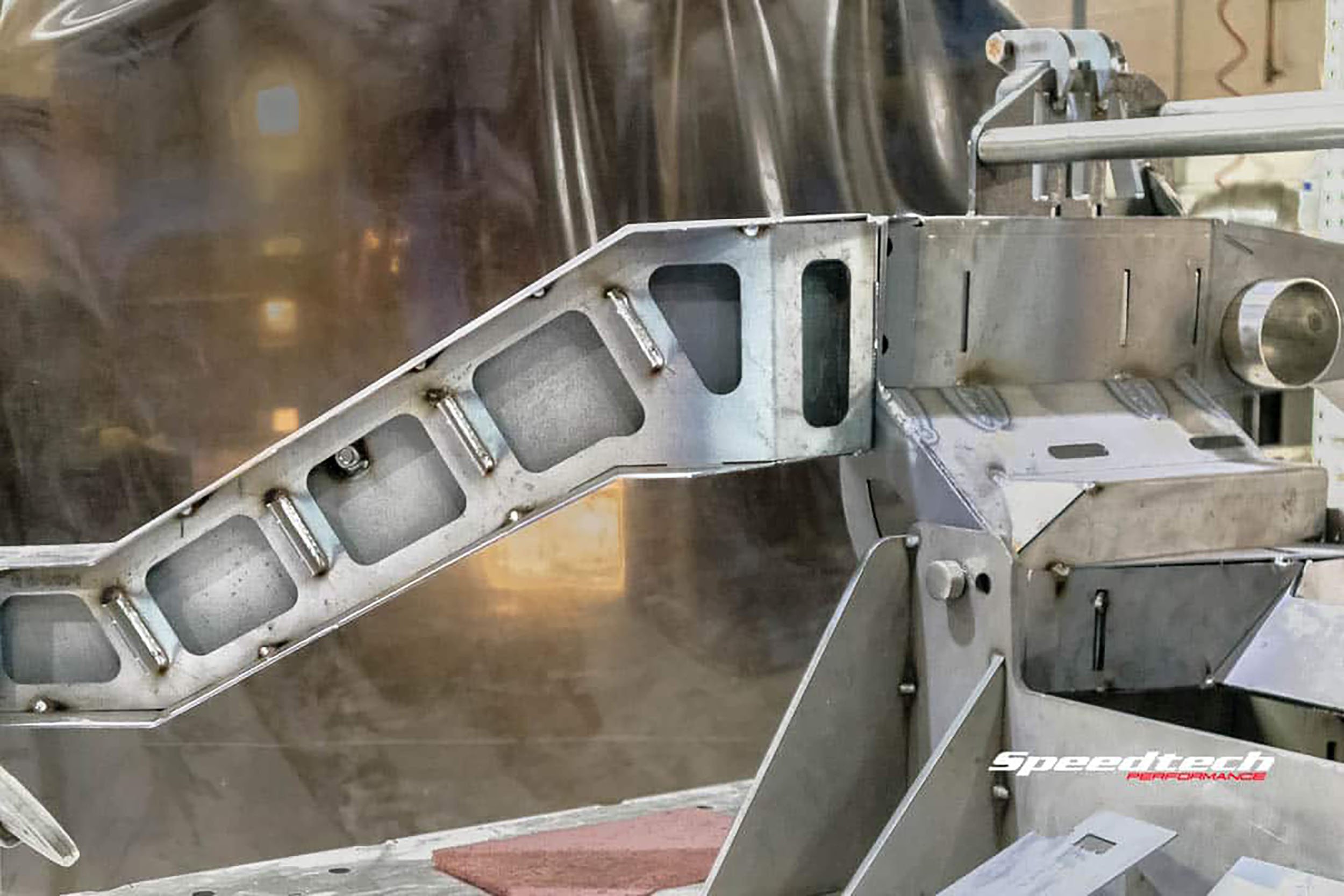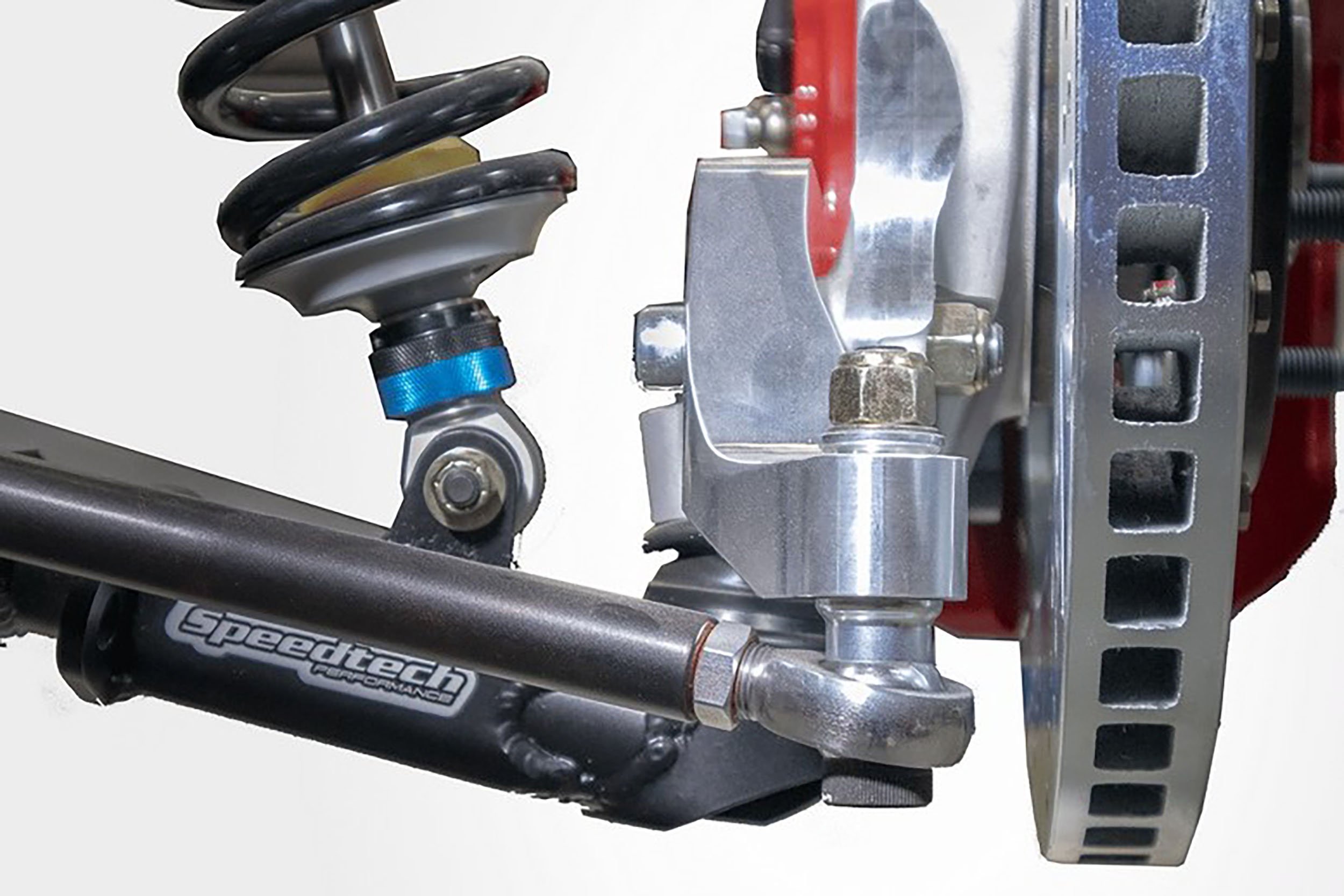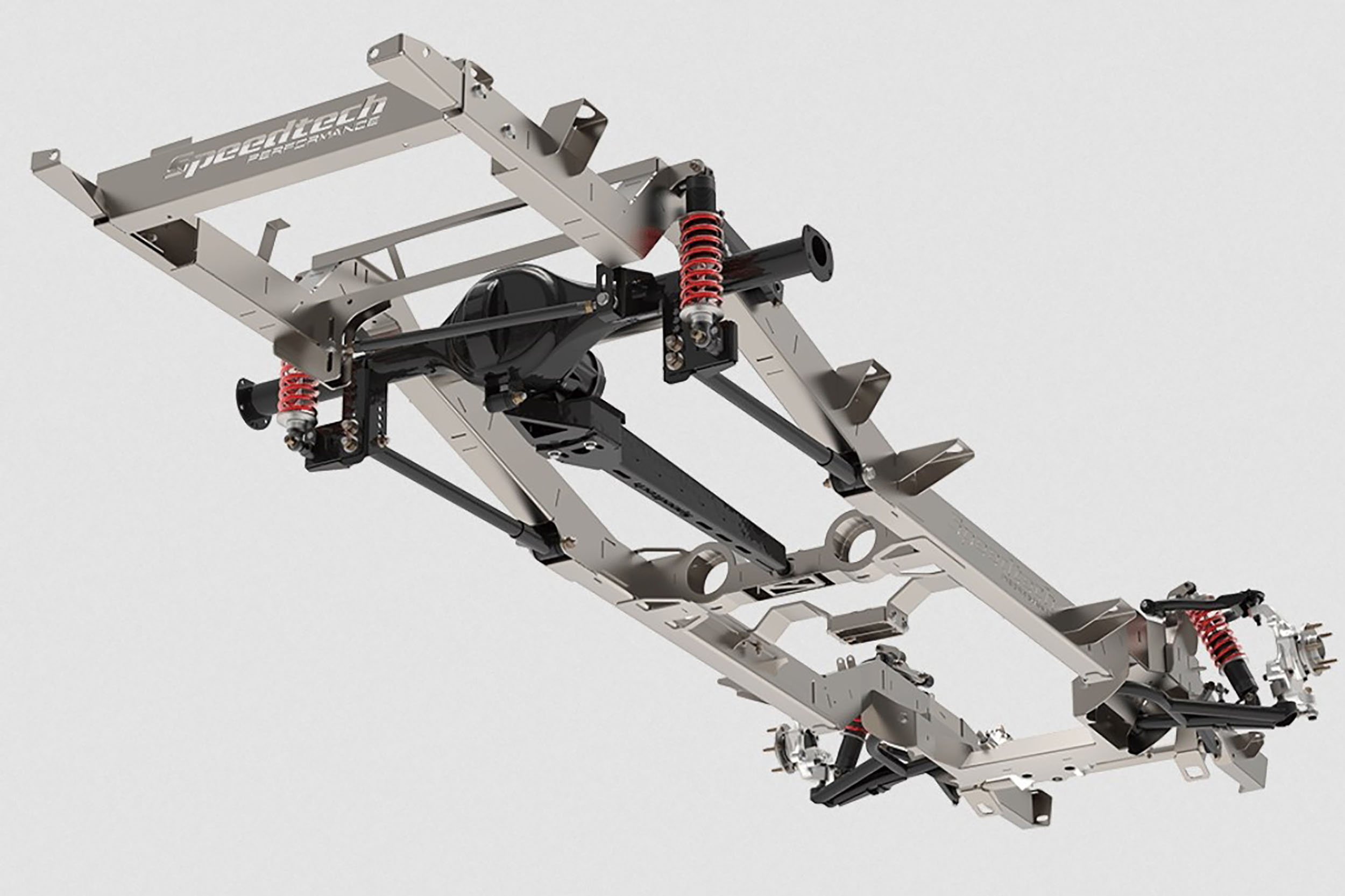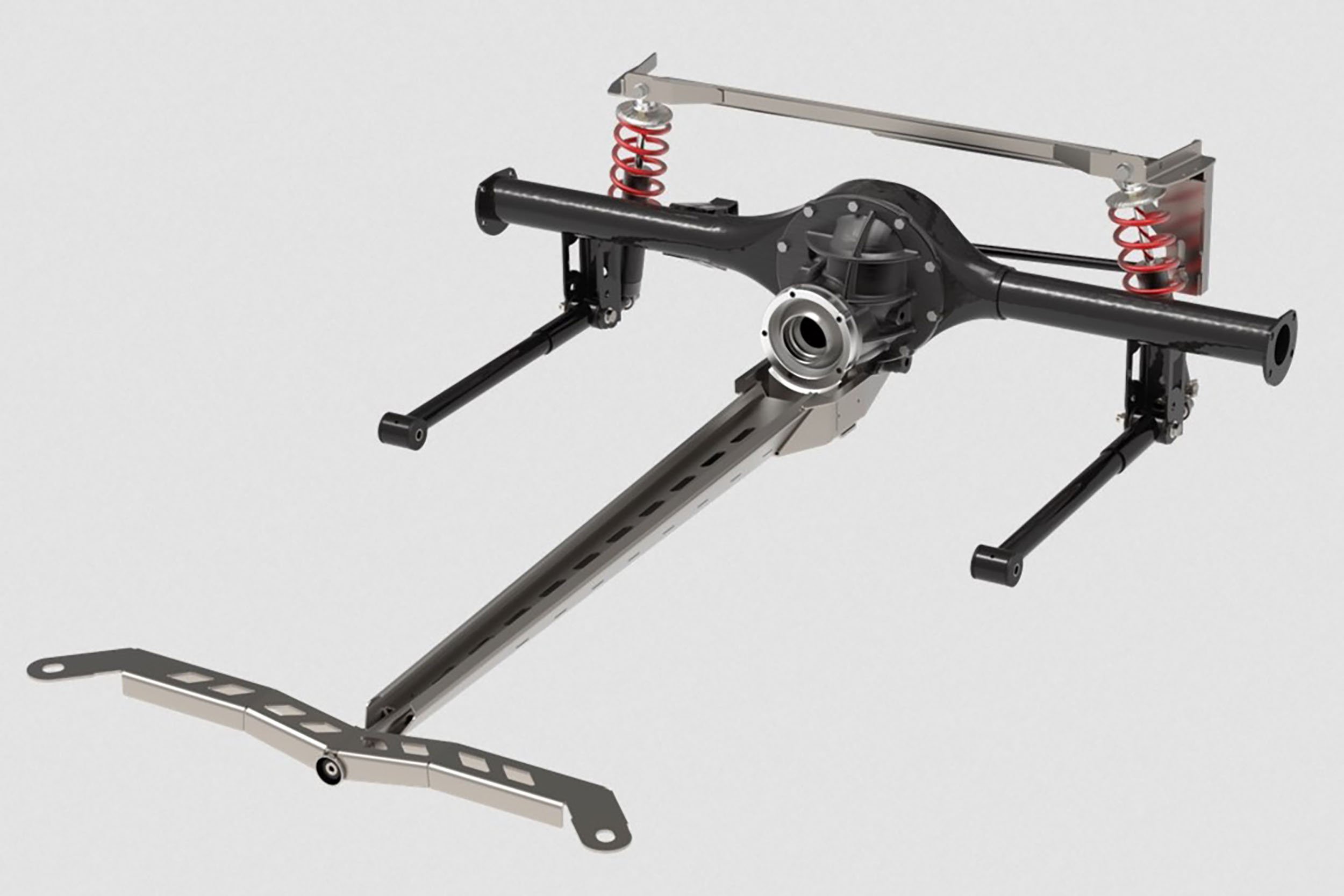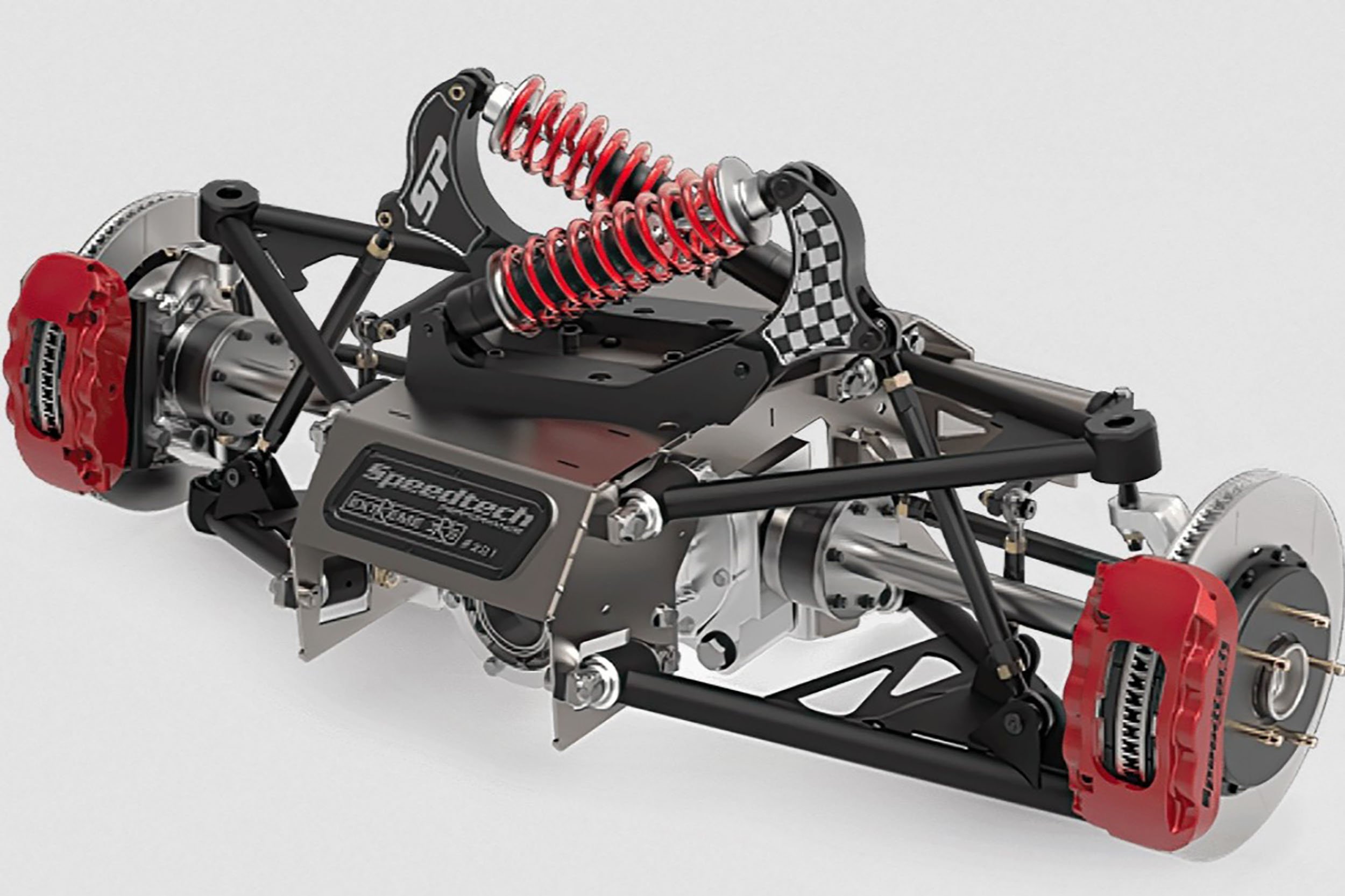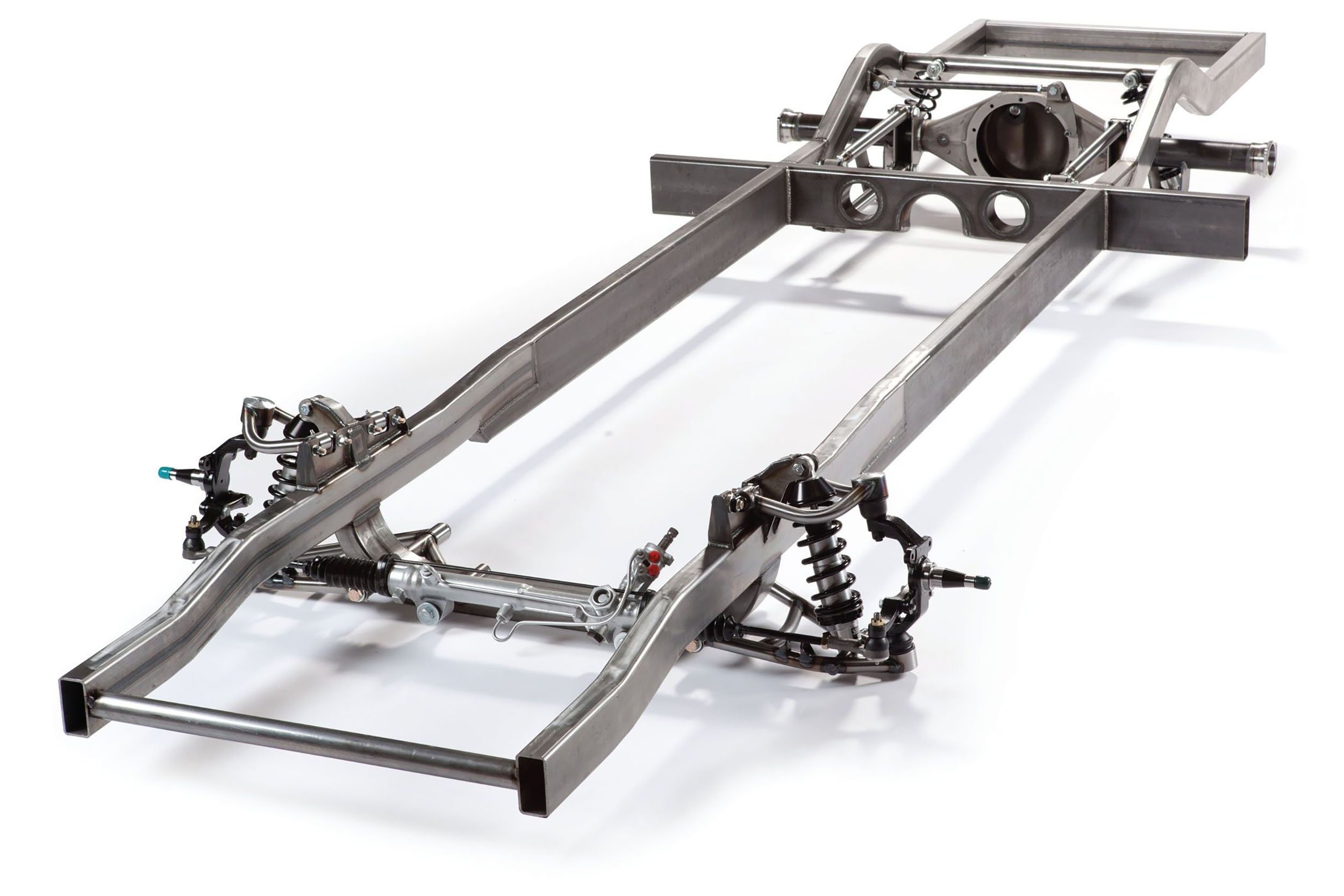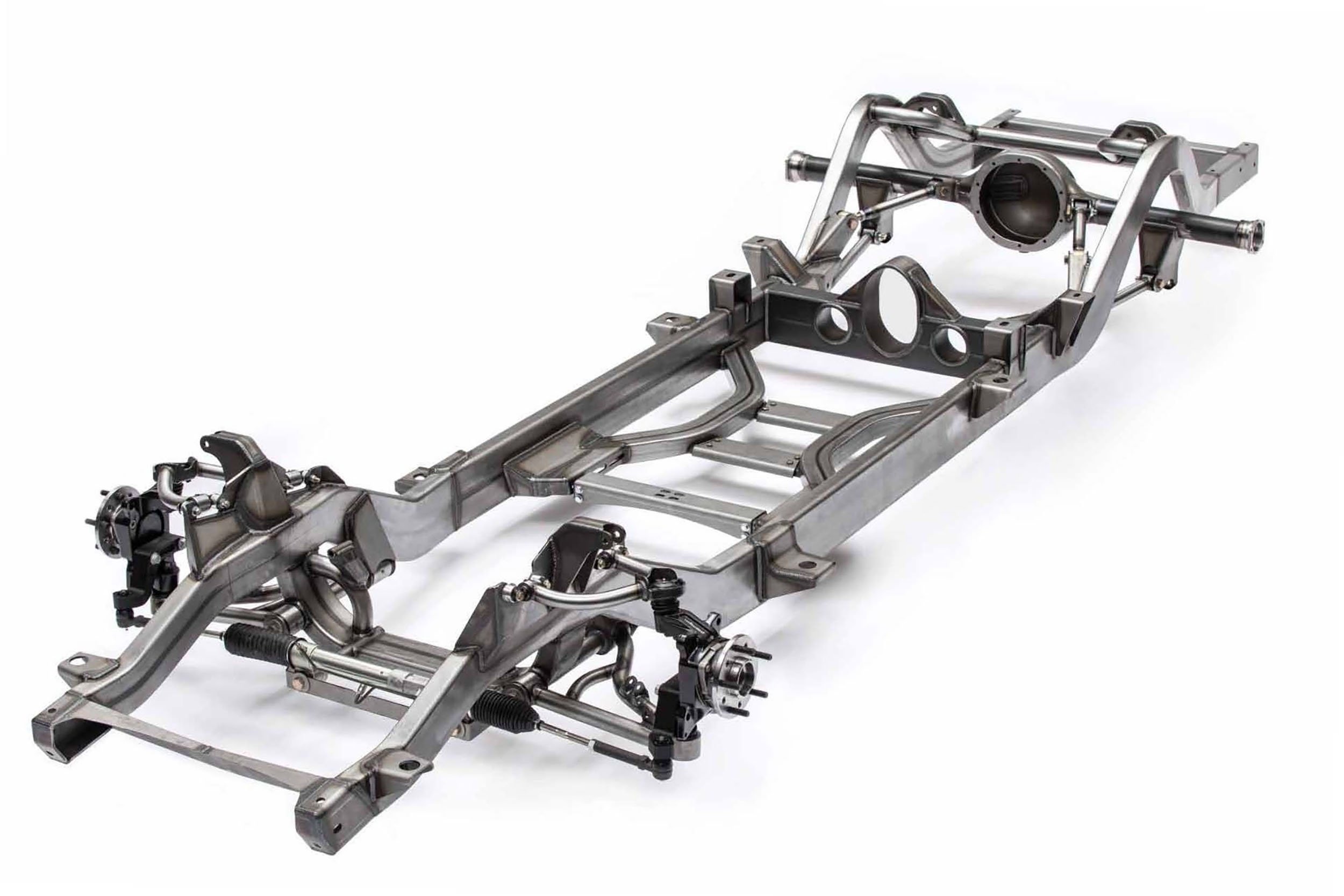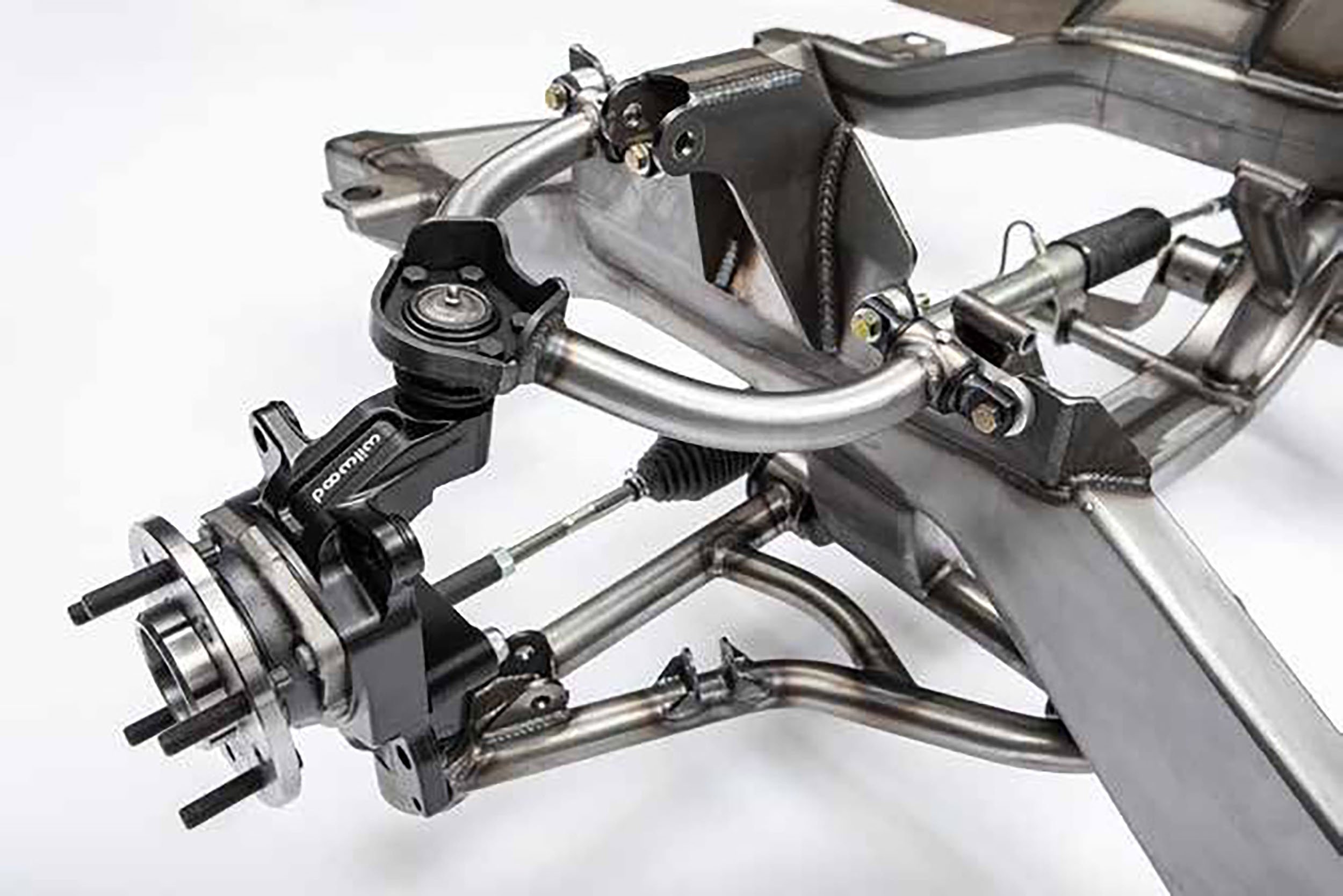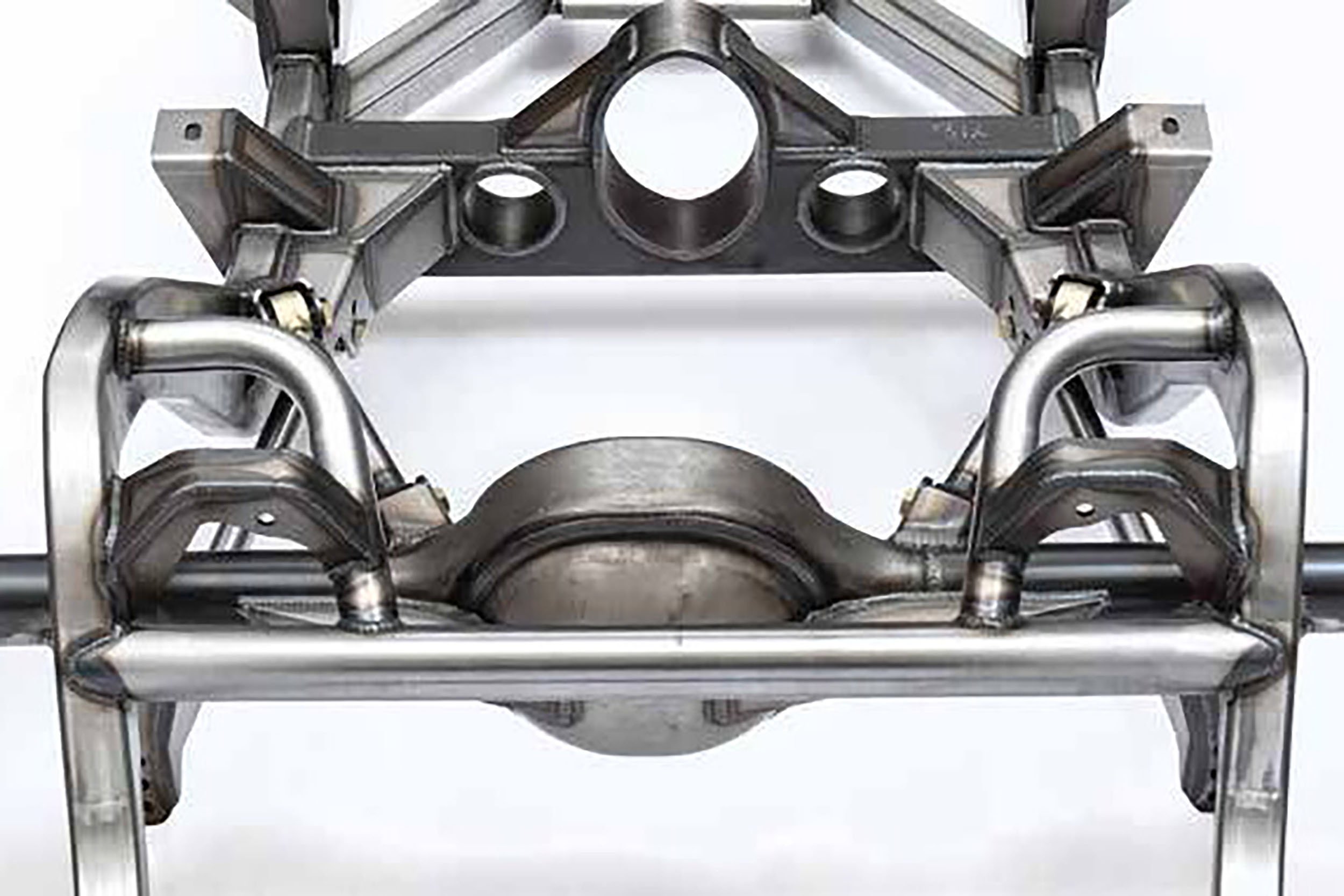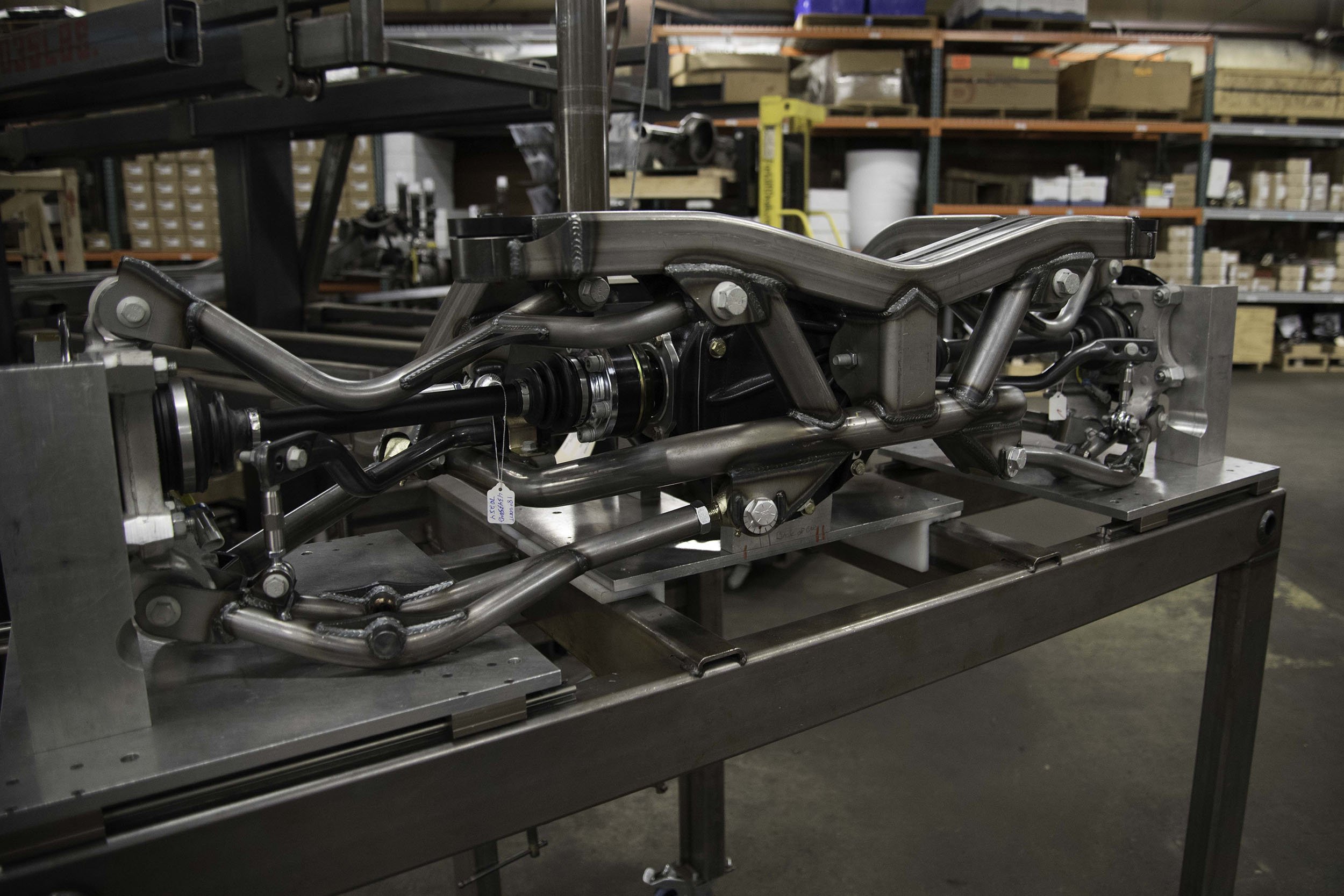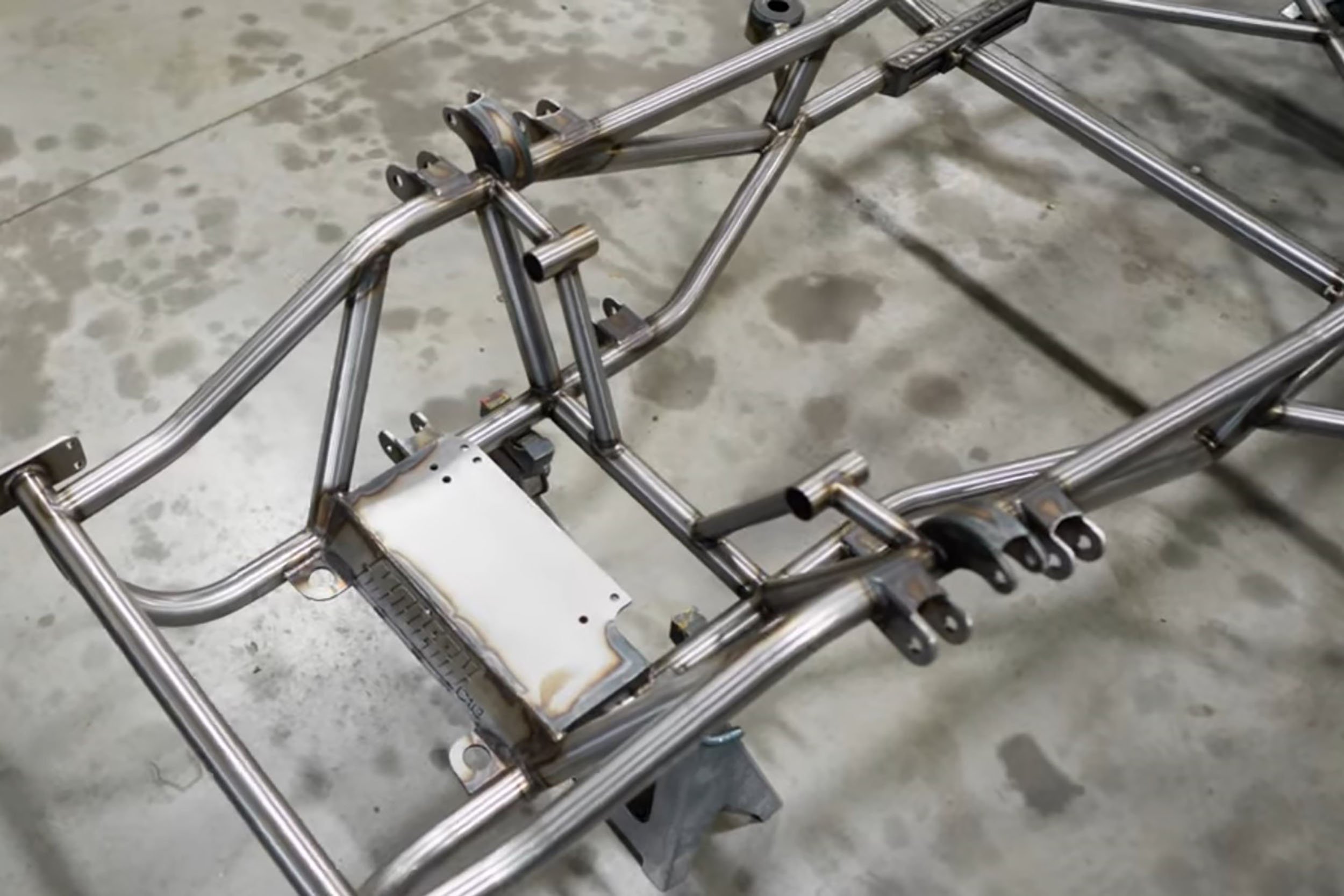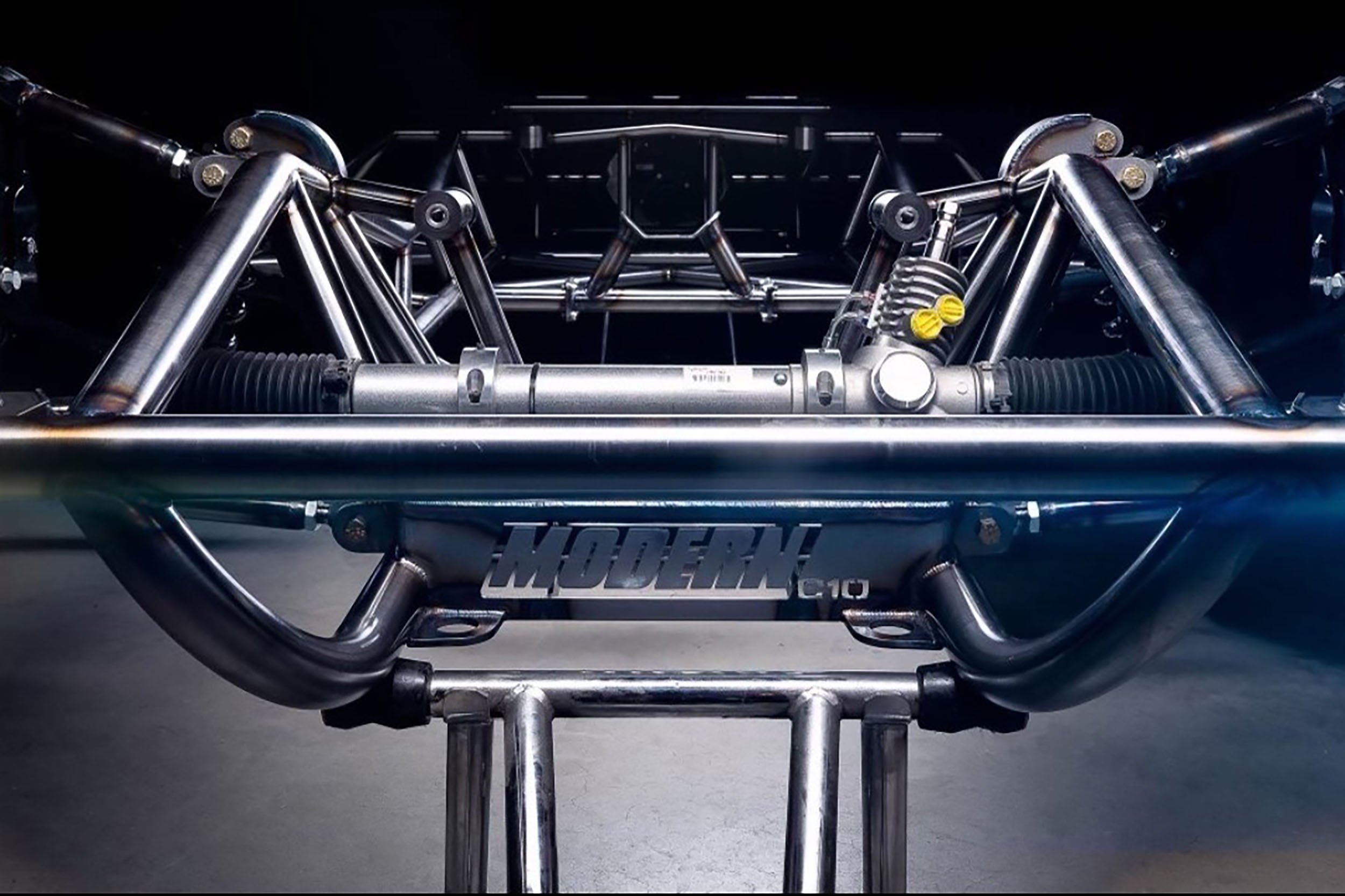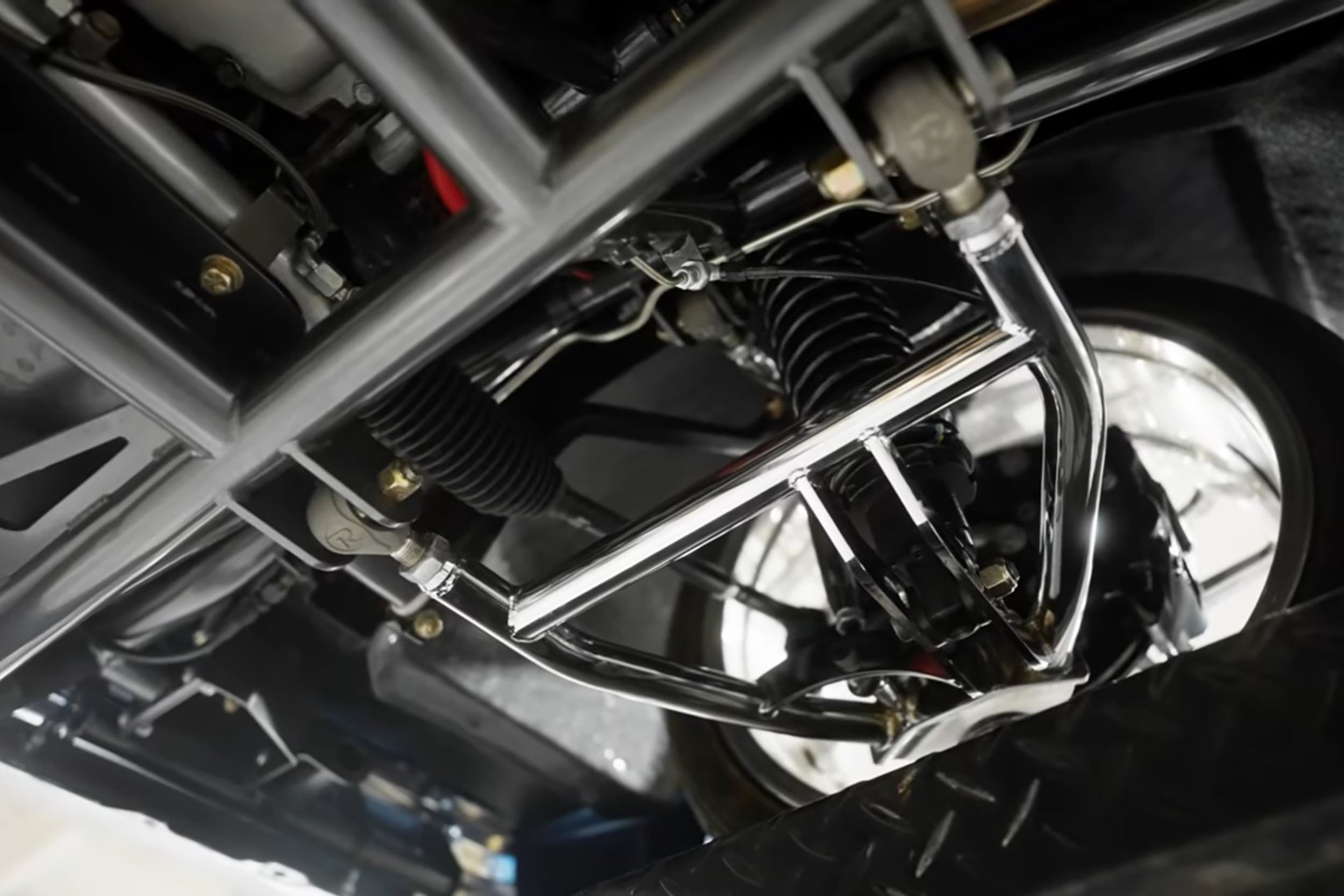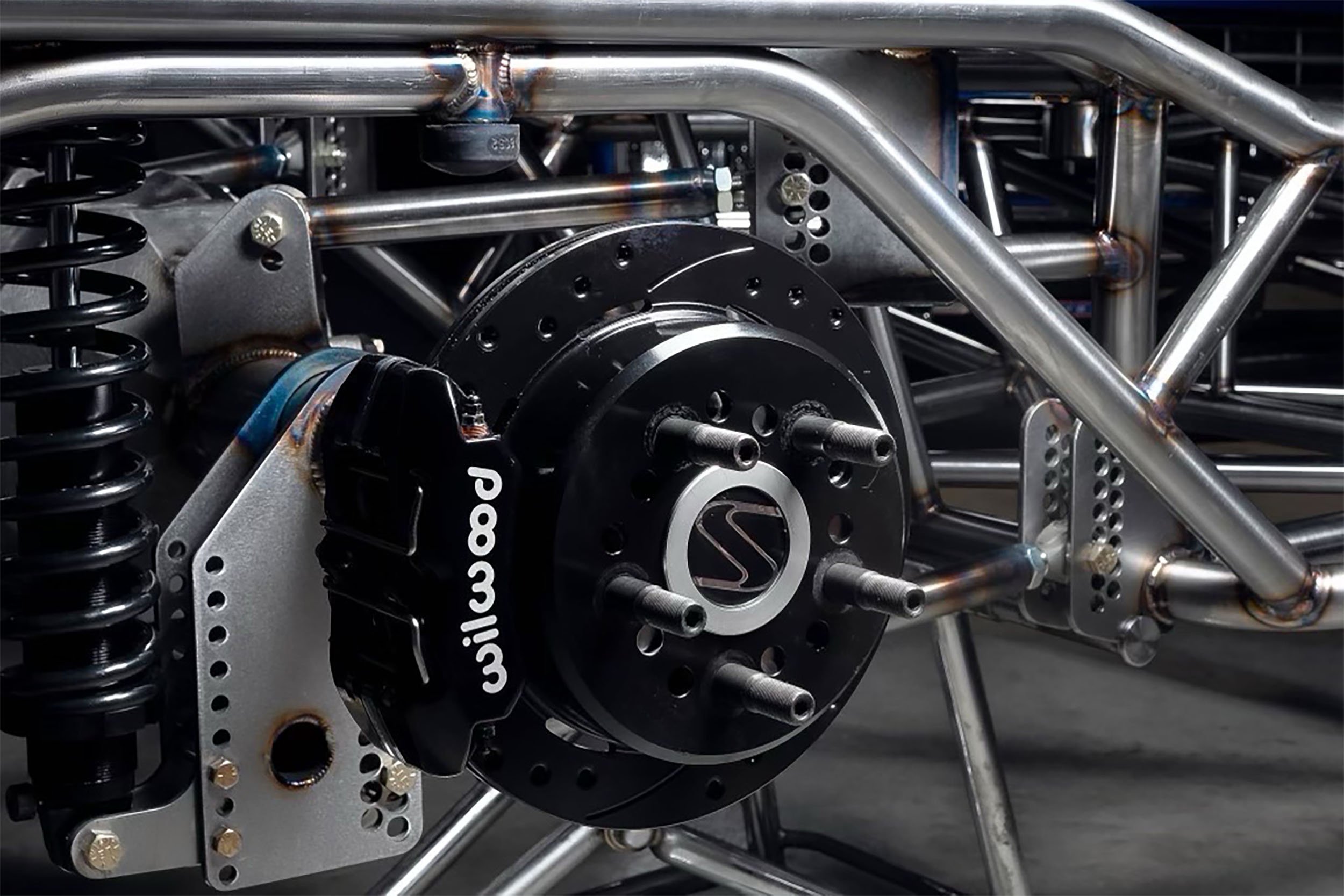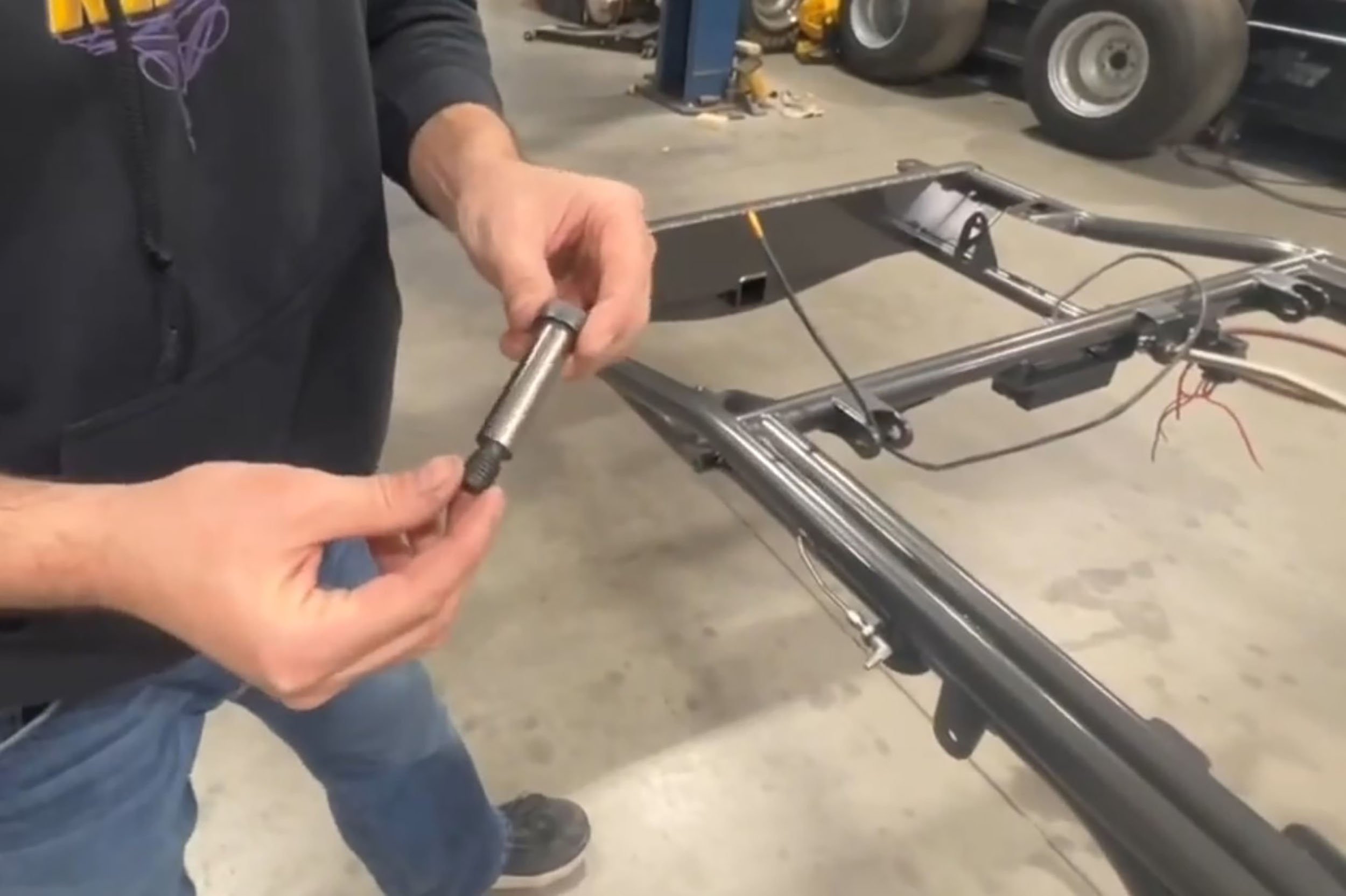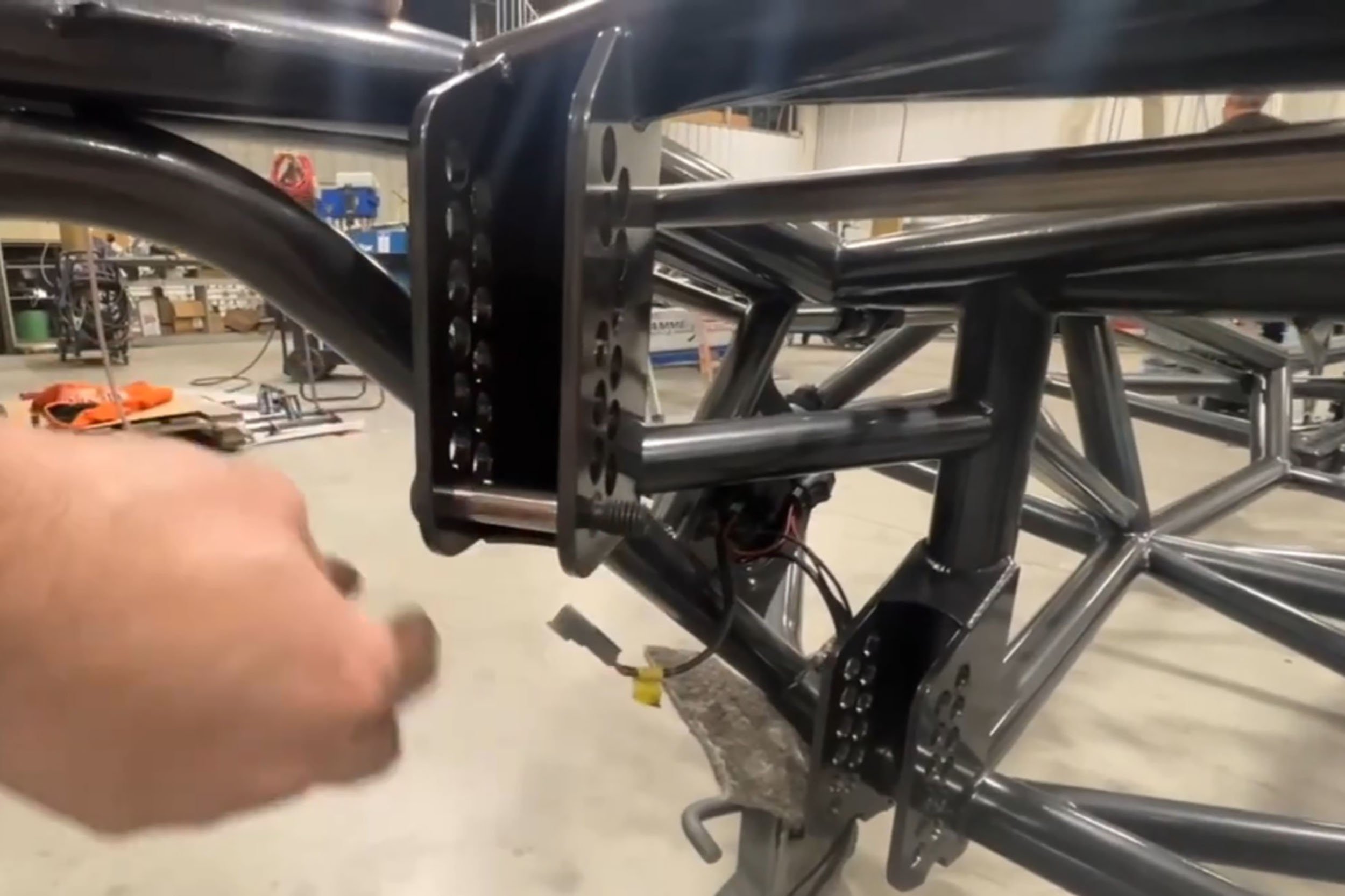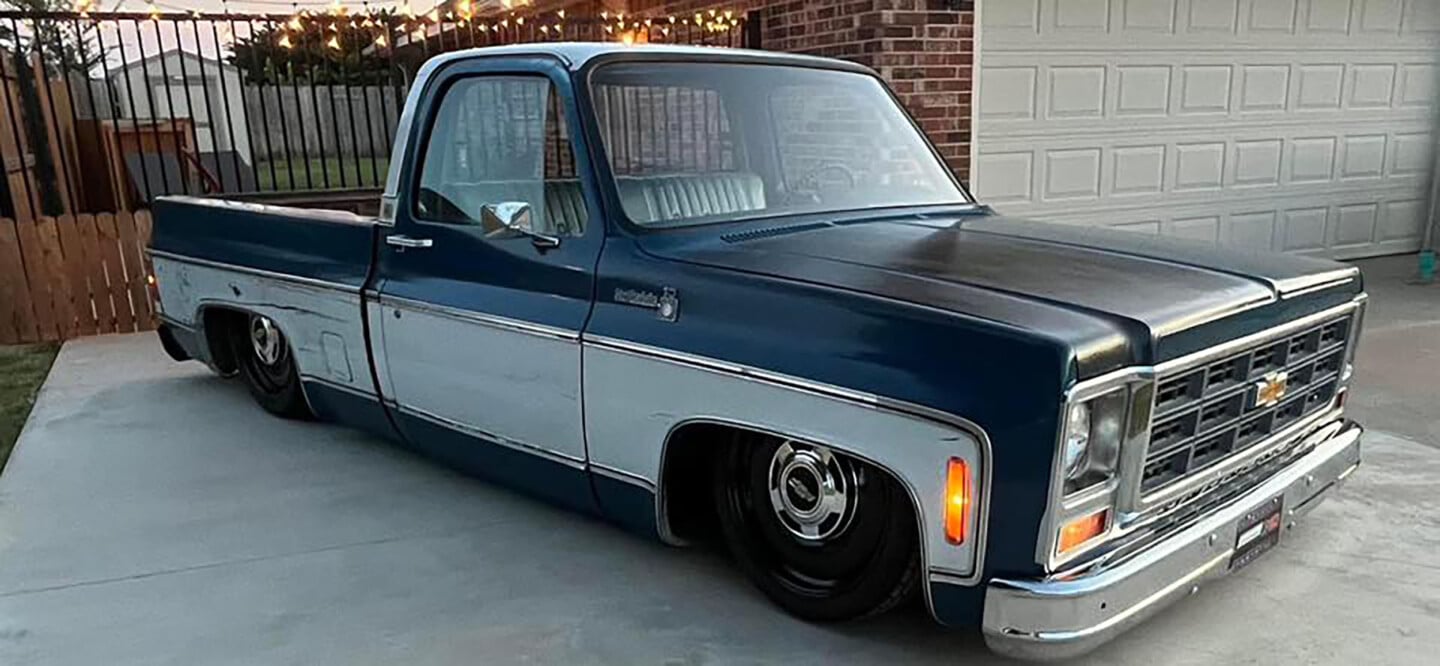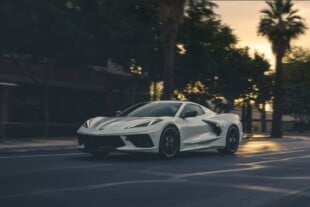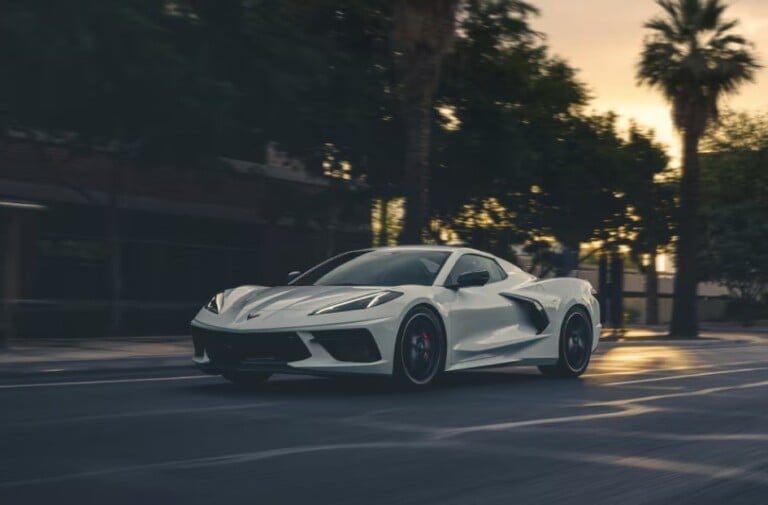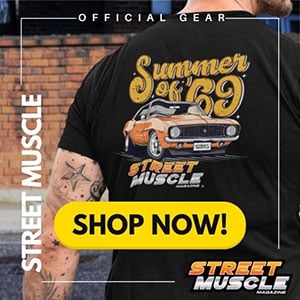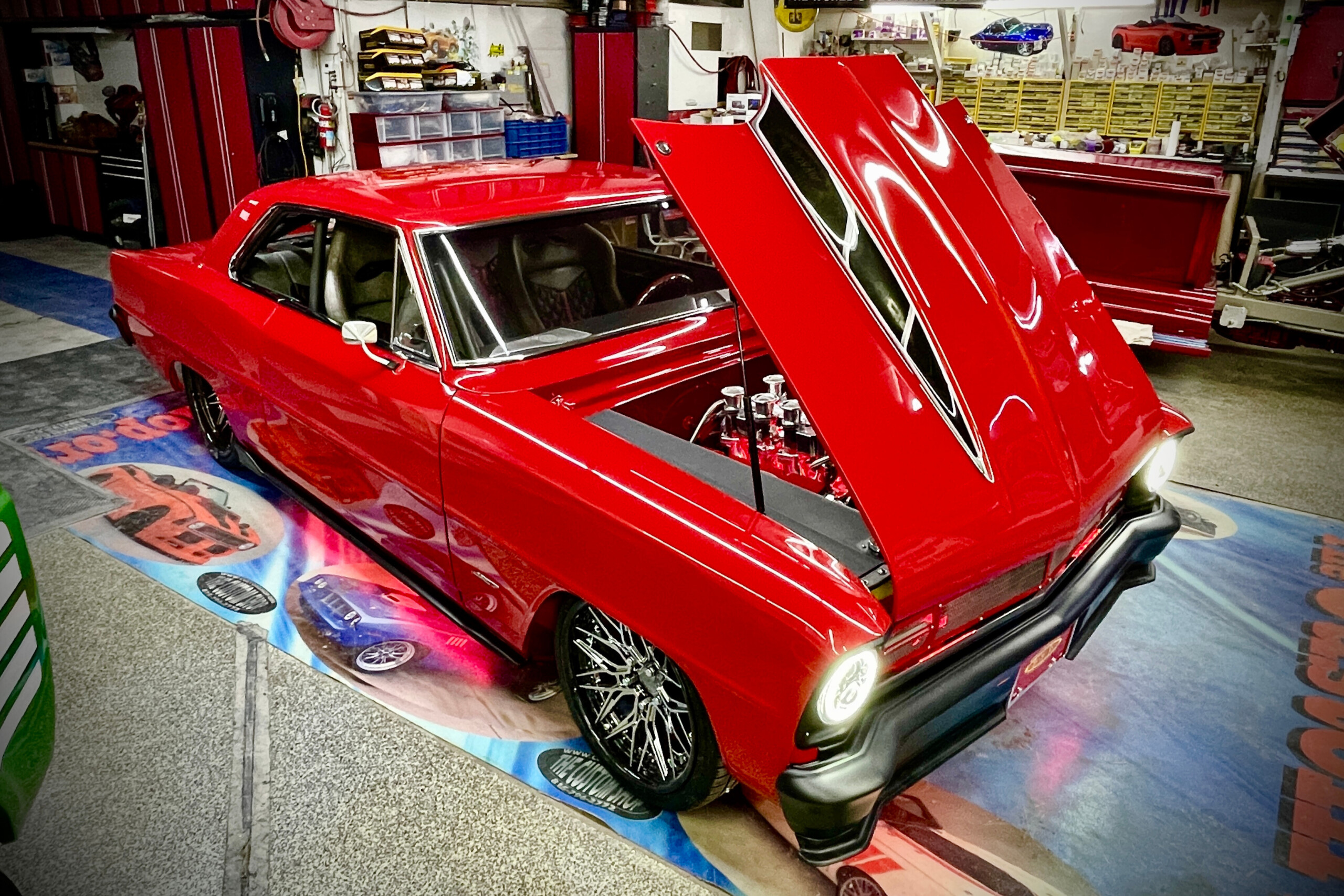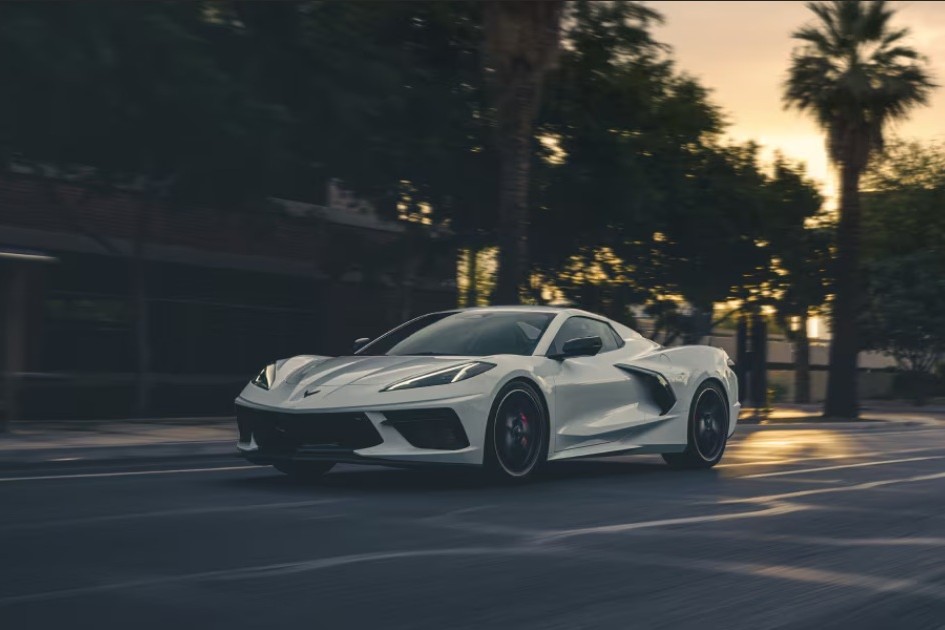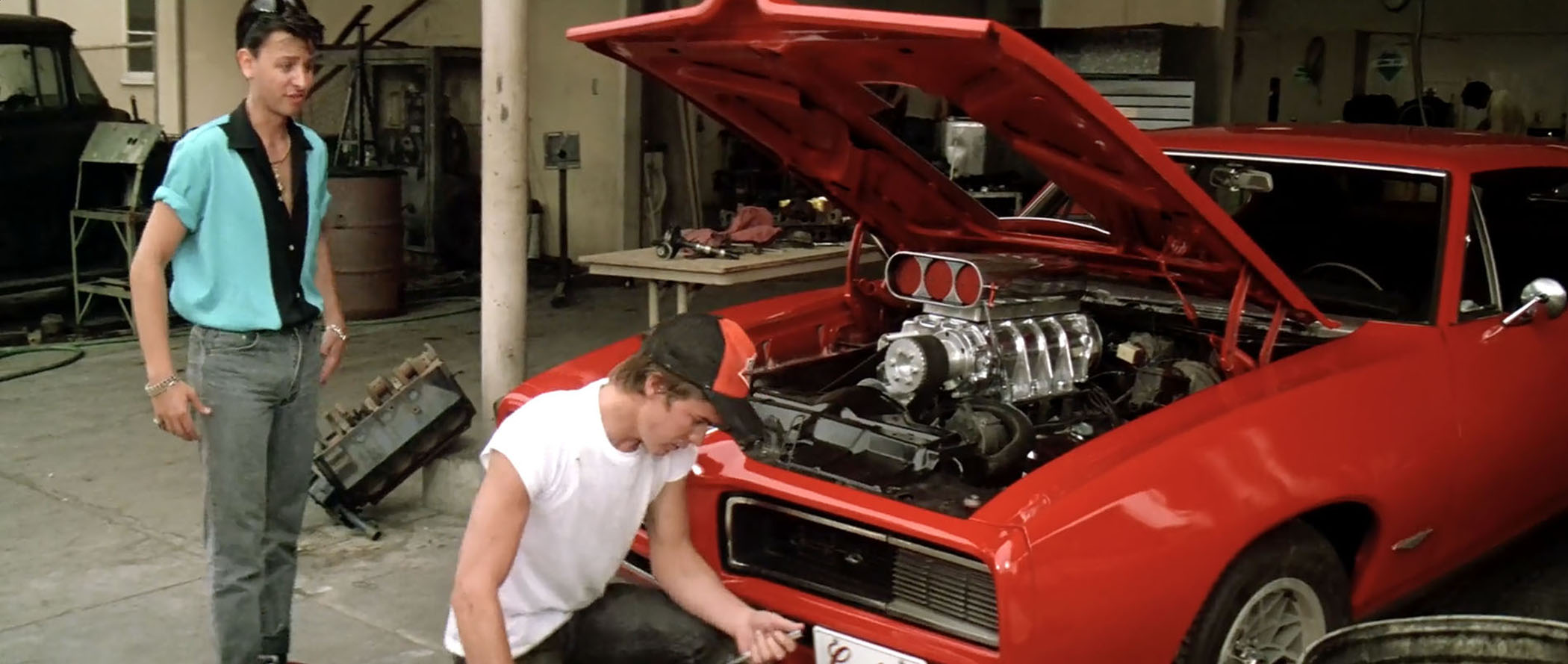It’s no secret that Chevy pickups make great hot rods. Everything from those early-‘40s Bowties up through the late-‘90s has been transformed into amazing performance vehicles. You can find many of these heavy-haulers tearing it up on the street, strip, and even the autocross. While we’re focusing specifically on aftermarket C10 chassis offerings, let’s get one thing straight: any vintage car or truck, from any era, will benefit from having a chassis built to modern specifications.
The C10 designation began at General Motors for the 1960 model year and was used to classify two-wheel-drive trucks with a “C” and four-wheel-drive trucks with a “K.” The moniker was used internally as a model code and also served as a marketing point for the various GM trucks. Many enthusiasts instantly think of the 1967-1972 trucks when they hear the term “C10,” but, all half-ton, two-wheel-drive Chevy (or GMC) trucks from 1960 through the “Square body” (1973-1987) era are also technically considered C10 trucks.
While the focus of this story is Chevy's "C10 trucks," there are options to upgrade just about any generation. (All photos courtesy of the manufacturers.)
The current popularity of GM trucks speaks to the lasting appeal of the company’s styling throughout each generation. Even the fourth generation of GM’s C/K truck line (1988-1998) known as the Old Body Style (OBS) has a strong following in both the enthusiast and aftermarket sectors. While the “C” still carried over, technically, these OBS trucks were not considered C10s. This is due to GM converting from a two-number “10” moniker to a four-digit variant – “1500” now being the designation for a half-ton pickup. GM then replaced its light-duty, C/K designation in 2000 with the Chevrolet Silverado and GMC Sierra, and these later-model trucks still have a strong following of enthusiasts and growing aftermarket support as well.
Why Use An Aftermarket C10 Chassis?
Whether talking about C10’s first-generation (1960-1966), second-generation (1967-1972), Square body (1973-1987), or even OBS trucks, the fact remains that these were designed as trucks, built to haul heavy loads. Factory performance was rated in payload and towing capacity, not G-forces and e.t.’s. Sure, suspension technology has improved throughout each generation of the C10’s chassis, but the newest ones are still almost four decades old. It’s easy to see how a modern, aftermarket C10 chassis can vastly improve a truck’s handling, performance, and overall drivability.
Designing a sturdy frame is tricky, instead of just having a lot of tubes you need the tubes in the right spot. – Mickey Tessneer, Modern C10
Improvements come in a variety of areas, but they all revolve around physics in one way or another. A typical aftermarket C10 chassis uses a combination of improved suspension geometry and modern components to make those classic trucks handle the highway (or competition course) as well or better than a modern vehicle.
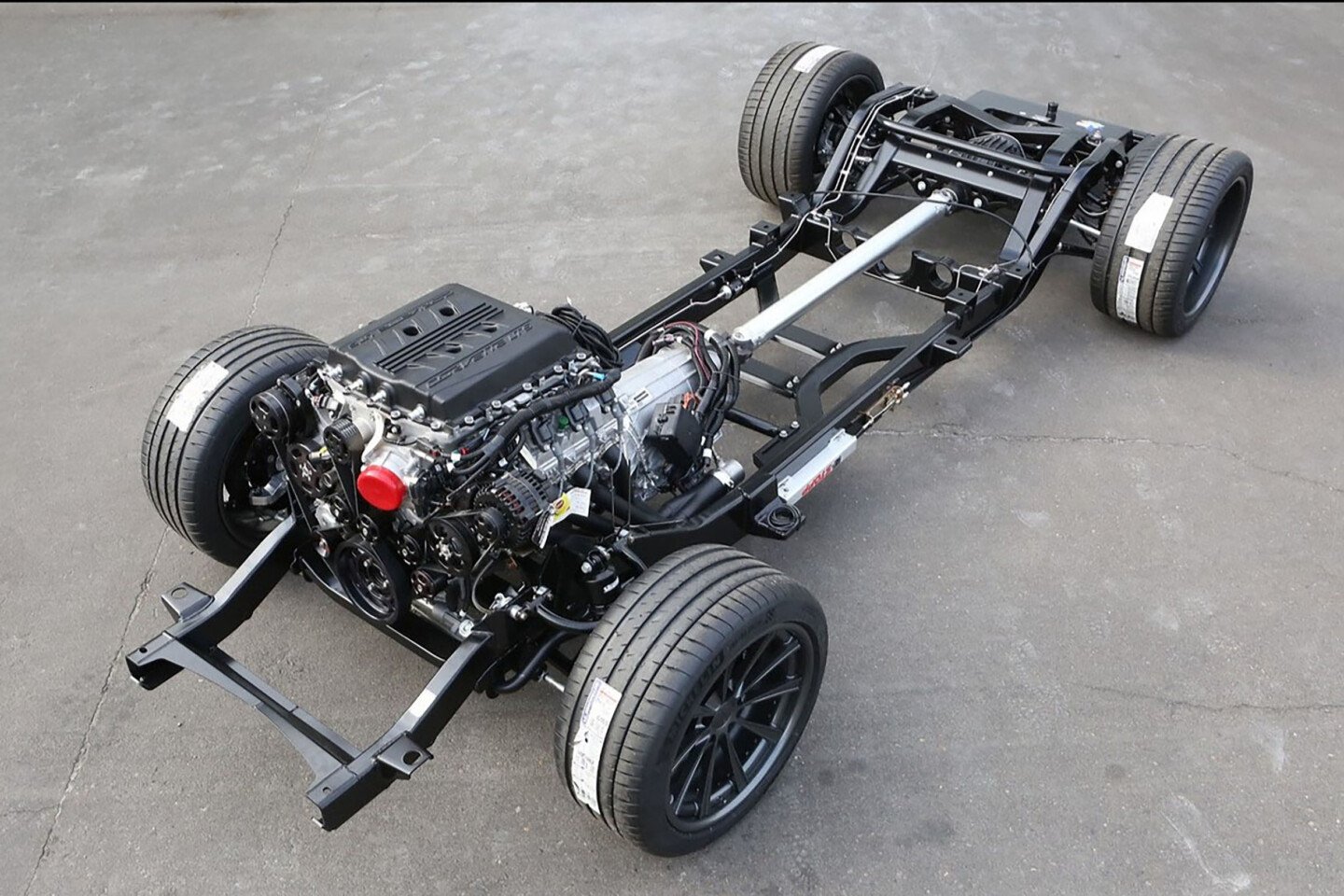
Using an aftermarket chassis not only brings modern steering and suspension geometry, but also can be built to utilize about any combination of engine and transmission imaginable.
An aftermarket C10 chassis makes use of modern components that weren’t even available when these trucks left the factory, such as rack and pinion steering, or coilover suspension. The idea they’d be used for anything other than hauling hay, and in need of a four-bar-suspended or independent rear suspension (IRS), would have been laughable. Along with these newer components comes improved geometry and the ability to make adjustments far beyond what the OEM frame and suspension permitted. The engineering instilled in modern-type front spindles themselves improves how well your vintage car or truck will handle the highway. Many times, modern spindles come ready for larger disc brakes as well.
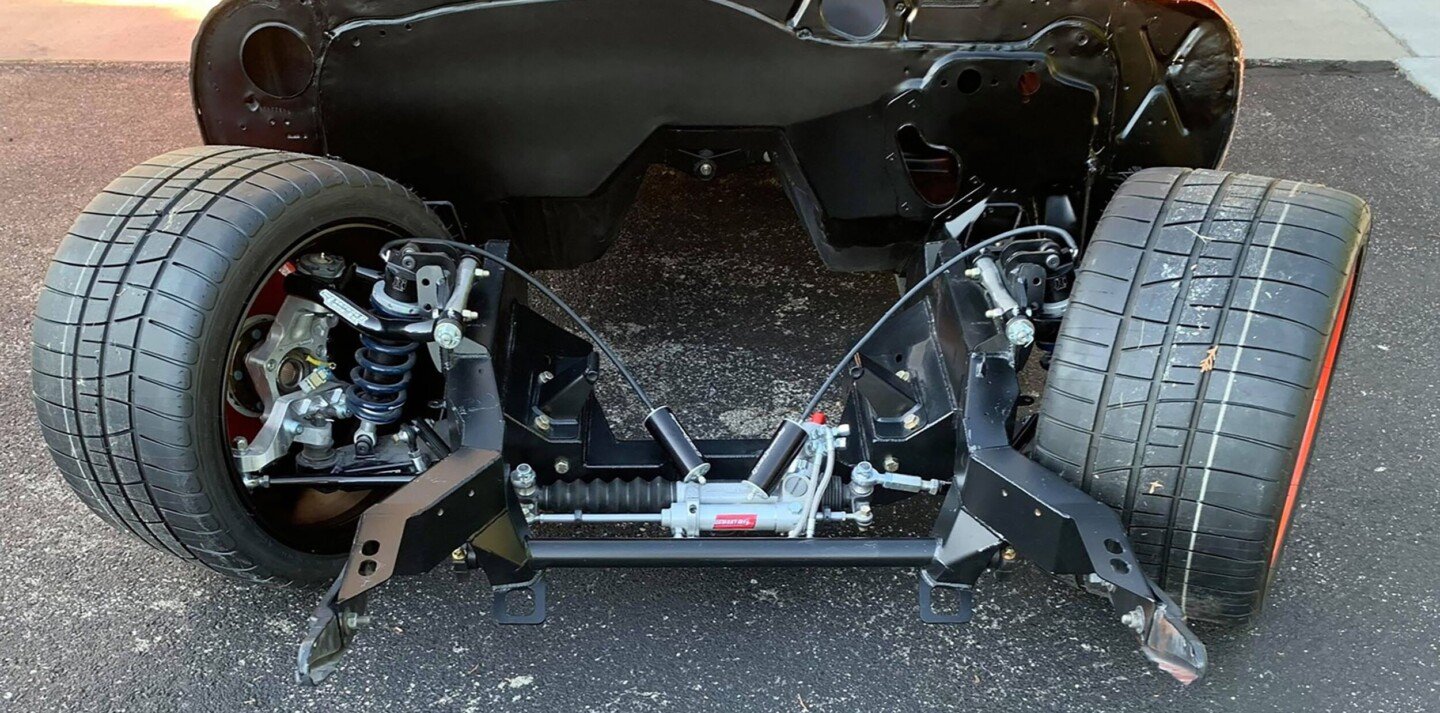
Aftermarket chassis are designed to improve the steering geometry of the vehicle as well as allow clearance for much wider wheels and tires when turning.
An aftermarket C10 chassis will also typically allow for a lower stance while permitting the use of wider wheels and tires. With the wider wheels and tires a consideration during the chassis engineering process, designers could create a suspension that allows for each, yet still provides for a proper scrub radius as well as an improved turning radius.
You’ll appreciate the improved turning radius when navigating parking lots. Without getting into an entire story on steering geometry (check out the video above), the scrub radius is the point where an imaginary line through the upper and lower ball joints relates to an imaginary line through the center of the tire at the road surface. If the distance between the two lines where the tire meets the road’s surface is too far apart, the vehicle’s steering will be “heavy.” You’ll also have more road feel through the steering wheel because the increase in scrub radius will amplify any road irregularities through the steering components to your hands.
Scrub radius can be affected by the width of the tire, wheel backspacing, and also if you are using spacers between the wheel and hub. This is an excellent reason to speak with any potential aftermarket chassis manufacturer to make sure your planned tire/wheel combo is correct for the application. This fact was driven home during the C4 Corvette era, when GM widened the sportscar’s suspension mid-way through production to close the scrub radius gap, caused by the car’s super-wide (for the time) front wheels.
Aftermarket C10 Chassis Options
Thanks to the popularity of Chevy’s half-ton hauler, enthusiasts have numerous options when it comes to choosing a chassis upgrade for their C10. We’ve listed a few here, but this list is far from exhaustive. Rest assured, each of these builders brings years of experience to every chassis they build and offers various options and upgrades to round out your project perfectly. Check out each one and we’re sure that you’ll find the perfect chassis upgrade for your C10.
Speedtech Performance
If you are a C10 fan who doesn’t spend most of his time under a rock, you’ve likely seen, or read about, a Chevy truck or two tearing it up on the autocross. These trucks can shine on the autocross and Speedtech Performance has spent years perfecting their aftermarket C10 chassis to prove it. Speedtech Performance approached the task of designing a chassis and suspension with a no-holds-barred mindset on a clean sheet of paper. The company offers its ExtReme, ExtReme Street, and ExtReme IRS chassis for a variety of Chevy and GMC trucks ranging from 1955 through 1998.
The company builds its frames using an innovative slot-and-tab construction which boxes the frame for rigidity, adding increased torsional stiffness throughout. The ExtReme and ExtReme Street chassis weigh about the same as a factory C10 chassis but are much stronger due to the internal gusseting used in its fabrication. An independent rear suspension (ExtReme IRS) option is heavier, thanks to several billet pieces and a robust differential housing. However, the suspension is lighter than OEM when comparing sprung vs un-sprung weight.
Each chassis component is designed for coilover shocks at every corner, allowing for quick ride adjustments. Speedtech also engineered its upper and lower control arms to help control bump-steer, provide a proper scrub radius, and relocate the coilover shock mounts for improved motion ratio for faster shock response.
Typical street builds are hitting almost 500 horsepower and even clearing 1,000 in some cases. The vintage frames were not engineered to have that kind of torque and twist. – Cameron Foremaster, Speedtech Performance
The frames are also designed for wider wheel clearance, with the ability to fit a 315 mm-wide tire under the vehicle with full steering and no interference.
Speedtech's torque-arm rear suspension offers less bind than a four-link and transfers both acceleration and braking transfer to the center of the vehicle. Or, customers can upgrade to an independent rear suspension for the ultimate ability to tune caster, camber, toe, and ride height to their driving needs.
Creating a chassis designed to handle the increased loads associated with much wider tires and wheels means upgrading all components. Speedtech designs each chassis with a heavy-duty rack and pinion steering system as well as hub-based wheel bearings that have proven themselves in competition. The result is an aftermarket C10 chassis that is perfectly suited for the highway or the pro touring circuit. Speedtech also offers a variety of options to help you complete your project, such as stainless steel headers for most engines, urethane engine and transmission mounts, an aluminum rearend center section with your choice of gear ratio, and quality brake packages from BAER or Wilwood.
Art Morrison Enterprises
The name Art Morrison Enterprises (AME) is a familiar one in the aftermarket chassis arena. Founded in 1971, the company has grown from a one-man garage into a leading designer and manufacturer of aftermarket chassis and components. AME has been building chassis for a wide spectrum of Chevy trucks (starting in 1947) and just recently began building four-wheel-drive applications as well. Sources within the company also told us they will soon be producing a chassis for OBS trucks (1988-1998).
Each Art Morrison-built chassis is engineered as an entire system, designed to work together as one unit. Everything from control arm design, shock placement, steering geometry, and even the location of each crossmember is scrutinized. This helps build the most rigid frame possible and ensures the best handling and driving experience. AME’s Matt Jones explains it best, “When a vehicle’s frame isn’t rigid, the suspension can’t function as it should,” he says. “The spring rate is effectively softened, sway bars aren’t as stiff, and odd vibrations now enter the driving experience. If it’s bad enough, cracks can form.”
Not only does the frame rail need to be stiff, but crossmembers need to be properly located to minimize cab-to-bed movement. – Matt Jones, Art Morrison Enterprises
The stock Chevy C-channel frame is “flimsy” when compared to an aftermarket C10 chassis. Each AME chassis is built to a much more rigid standard using mandrel-bent square tubing at its core. As such, an AME C10 chassis will bring a bit more heft to the scales. This allows for a firm foundation upon which its modern suspension can shine.
Jones breaks down the importance of upgraded geometry into two segments. The first is keeping the tire at the proper angle to the road through improved camber and slip angle. Secondly, engineering a chassis with proper geometry allows the vehicle’s body to move and respond in a way that feels natural to the driver. When both are ideal, the tire has an optimum contact patch and the driver can feel what the vehicle is doing at all speeds.
Art Morrison Enterprises designs each chassis to a customer's specifications. The company offers a variety of upgrades, including a fully independent rear suspension.
Since the wheel and tire package is literally where the rubber meets the road, the intended wheel/tire package plays a huge part in designing an aftermarket chassis. “To the engineer, it’s an integral part of the spring rate, lateral stiffness, and contact patch. It’s also the lever arm that transfers forces from the road to the spindle/knuckle,” Matt says. “As for aesthetics,” he goes on, “To the rest of the world, it makes up a massive portion of the overall styling. The wrong wheel and tire can ruin any good-looking truck.”
A quick look at the various builds that are resting on an AME-built chassis will reveal the company not only understands the benefits of modern geometry, but also has an eye for improving the overall styling of a vehicle.
Modern C10
Just as the name implies, a Modern C10 chassis is a complete upgrade to a C10’s performance and handling. Mickey Tessneer’s 16 years of experience building high-horsepower drag cars has enabled him to design a frame specifically for 1973 through 1987 C10 trucks. Each frame is made from high-quality, CNC-bent, DOM steel tubing, which is then precisely fit and tig welded. Using round steel tubing is a definite deviation from the C10’s factory, riveted C-channel frame, and Mickey explains several benefits come with the design.
“If you compare a fully assembled factory chassis to a fully assembled Modern C10 chassis, there will be about 270 pounds of weight loss with our chassis,” states Mickey. “Also, there’s a 17 percent shift of weight to the rear, which gives your c10 more of a 50/50 weight distribution, similar to a modern performance car.”
A Modern C10 chassis is designed to utilize a late-model powertrain and gives ample room for exhaust, transmission, and oil pan clearance. The upper and lower control arms (right) all have adjustable ends which allow fine-tuning of the truck's front track width, if necessary.
As mentioned, improved geometry will give you huge gains in handling and Tessneer’s team has done the math. A Modern C10 chassis is also designed to lower the vehicle’s ride height, which will lower its center of gravity. Then, they lowered the engine in the chassis, which dropped the truck’s center of gravity even further. These improvements in weight bias and center of gravity will equal large gains in the truck’s cornering capability and roll rate.
A Modern C10 chassis features a four-link rear suspension. Mickey engineers his chassis to use a shouldered bolt for the link bars. This ensures they are fastened securely without over clamping the end joints and putting the suspension in a bind.
The Modern C10 front suspension has good roll center positions and anti-dive technology built-in to improve handling characteristics when braking or turning. The design also eliminates the factory bumpsteer that has plagued these trucks. The rear suspension is a fully adjustable, triangulated four-link. This is a very versatile suspension in a performance scenario, able to be used in daily drivers for good riding characteristics, or it can be used in a performance setting such as drag racing, road racing, or drifting. The four-link suspension allows adjustability for instant center changes to fine-tune the vehicle’s weight transfer and steering response.
Modern C10, as the name implies, focuses on creating only C10 chassis, but it does offer custom features including mild steel/chromoly options, bumper brackets, fuel tanks, fuel lines, brake lines, trailer hitches, and the like to go with the chassis. Modern C10 strives to eliminate as much of the necessary fabrication you might encounter with a typical aftermarket C10 chassis. There’s no need for raising the bed floor and the chassis was designed to use a 17-inch-wide tire and readily available, widened wheel tubs in the rear. The front suspension can accommodate up to 11 inches of tire with off-the-shelf inner fender wells.
The Bottom Line
To achieve modern handling on a C10, you have two choices: build off the stock frame or buy an aftermarket chassis. The former, which is fodder for another day, does not offer anywhere near the advantages we have listed here. And if you are hiring a chassis builder to do it, between frame stiffening, chopping, C-notching and up-fitting with modern suspension parts – it would be very easy to equal or surpass the cost of purchasing an aftermarket chassis from the get-go (especially if your frame has any damage or rot).
As for the second option, there are many aftermarket C10 chassis to select from. Choosing the best one for your application simply means understanding your goals for the vehicle and the style of build you are seeking. Each chassis builder we’ve highlighted here (along with several others who could be included in this list) brings years of experience in their respective fields to build the best chassis possible.
Now you understand why an aftermarket C10 chassis is more than just a styling exercise and can totally transform your next build. We recommend you check out each website as you consider the various options available. We hope this story has offered up information and considerations that will help you to choose the perfect chassis for your application. Once your project is complete, you’ll be rewarded with a vehicle that exhibits the same (or better) handling, performance, and ride quality rivaling many vehicles built today.


